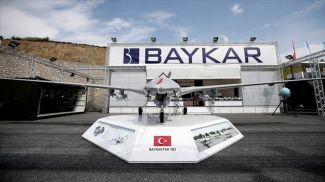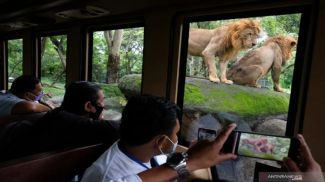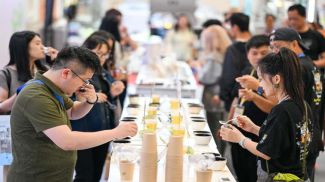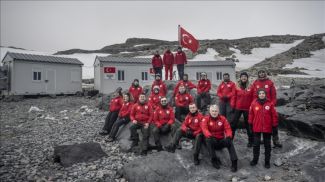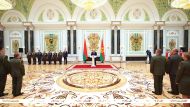BEIJING, 6June (BelTA - Xinhua). - China launched the crewed spaceship Shenzhou-14, sending three astronauts to its space station combination for a six-month mission.
The trio will cooperate with the ground team to complete the assembly and construction of the Tiangong space station, developing it from a single-module structure into a national space laboratory with three modules -- the core module Tianhe and two lab modules Wentian and Mengtian.
The spaceship, atop a Long March-2F carrier rocket, was lifted off from the Jiuquan Satellite Launch Center in northwest China at 10:44 a.m., according to the China Manned Space Agency (CMSA).
About 577 seconds after the launch, Shenzhou-14 separated from the rocket and entered its designated orbit. The crew members are in good shape and the launch is a complete success, the CMSA declared.
This is the 23rd flight mission since the approval and launch of the country's manned space program, and the third crewed mission for China's space station project.
At 5:42 p.m., the spaceship conducted a fast automated rendezvous and docking with the combination of the Tianhe module, the Tianzhou-3 cargo craft and the Tianzhou-4 cargo craft.
After a series of preparations, Chen Dong, the commander of the crew, opened the hatch of the Tianhe core module. By 8:50 p.m. (Beijing Time), astronauts Chen Dong, Liu Yang and Cai Xuzhe had entered Tianhe one by one.
The crew will work with the ground team to complete the rendezvous, docking and transposition of the two lab modules with the core module, said Lin Xiqiang, deputy director of the CMSA, at a press conference Saturday.
The Tianhe core module was launched in April 2021, and the Wentian lab module is set to be launched in July and Mengtian in October.
The Shenzhou-14 crew will also witness, during their stay in orbit, the Tianzhou-5 cargo craft and Shenzhou-15 crewed spaceship dock with the core module. Then, they will live and work together with the Shenzhou-15 crew for multiple days before returning to Earth.
MECHANICAL ARMS
One of the noteworthy tasks for the Shenzhou-14 crew is to test and operate the large and small mechanical arms.
The core module is mounted with a 10-meter-long big mechanical arm, and the Wentian lab module with a small one.
The weight and length of the small mechanical arm are about half of that of the large one, but it is quite flexible and can perform operations with greater precision.
During the Shenzhou-14 mission, the crew will, for the first time, be aided by the small mechanical arm to get out of the space station, Huang Weifen, chief designer of the China manned space program's astronaut system, told Xinhua in an exclusive interview.
The small arm can also be captured by the large one to form a combined arm that is capable of performing extravehicular operations with better accuracy at a larger range.
VERSATILE LAB
China's Tiangong space station is designed to be a versatile space lab, capable of accommodating 25 experiment cabinets for scientific exploration.
The experiment cabinets installed on Wentian can support experiments on life and ecology and biotechnology. Astronauts can conduct experiments on molecules, cells, tissues and organs in Wentian by using diverse online detection methods, such as visible light, fluorescence, or microscopic imaging.
Wentian can also simulate variable gravity environments to support the comparative study on the biological growth mechanism in different gravity conditions.
The latecomer Mengtian lab module is equipped with experiment cabinets to study the effects of microgravity, covering the physics of fluids, material science, combustion science and basic physics.
Mengtian will have a space-based cold atomic clock system consisting of a hydrogen clock, a rubidium clock and an optical clock, building a precise time and frequency system in space that can serve the gravitational redshift research, the measurement of fine structure constants, and other applications.
WELL PREPARED
The three astronauts completed an average of 7,000 hours of required training, said Zhang Wanxin, deputy chief designer of the China manned space program's astronaut system, in a briefing before the launch.
"The space station will have more complex configurations that may increase the error probability," Huang said. "Therefore, they've been trained to respond to emergencies and eliminate troubles."
The three astronauts Chen Dong, Liu Yang and Cai Xuzhe share similar personality traits, Huang said, adding that they are extremely meticulous and conscientious, eager to learn and possess excellent team spirit.
The Shenzhou-14 crew will rotate with the Shenzhou-15 trio in orbit, which poses a challenge to the space station's recycling and life support system.
"Since the two crews, totaling six astronauts, will live together in orbit for five to 10 days, their basic life necessities must be secured," Zhang said.
The Chinese astronauts are expected to taste a kind of fruit their predecessors never had the chance to eat in space -- grape.
"We try to provide them with rich varieties of palatable food as well as comfortable, safe, good-looking and tailored clothes," Zhang added.





